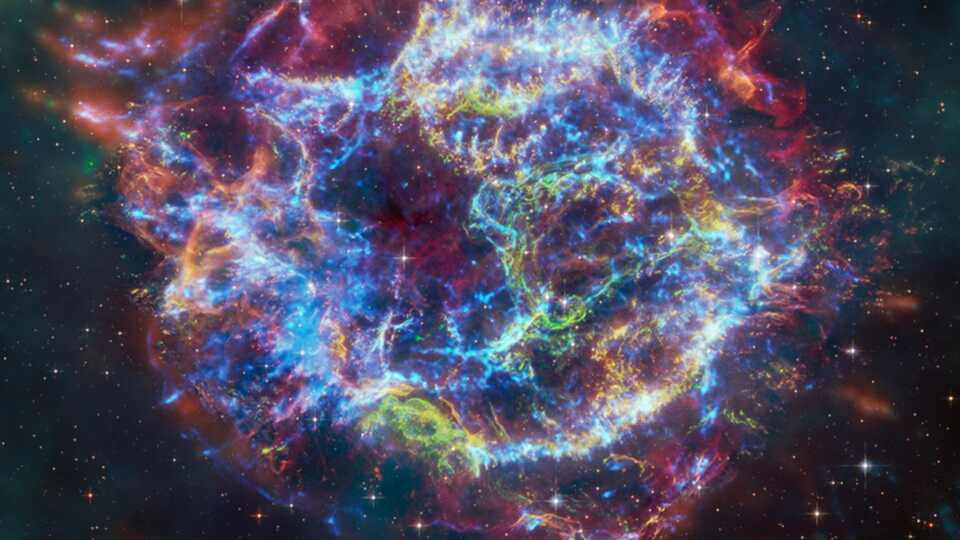The Benjamin Dean lecture series brings the world's leading experts in astronomy, astrophysics, and more to the Academy's Morrison Planetarium.

In the Academy’s latest planetarium production, Spark: The Universe in Us, audiences get an up close and three-dimensional look at the Cassiopeia A supernova remnant (affectionately known as “Cas A”). Re-created using computational models of the expanding nebula, it’s a unique view of an important object.
On the first day of the 243rd American Astronomical Society meeting, currently taking place in New Orleans, Louisiana, Danny Milisavljevic from Purdue University shared a similarly eye-opening perspective of Cassiopeia A. The space-based powerhouses of Hubble, Chandra, and JWST can only capture two-dimensional views, but details explode out of the image.
Milisavljevic touted the reasons why Cas A is the best galactic supernova remnant to investigate how giant stars end their lives: it’s the youngest known supernova remnant (formed by a star that exploded only about 350 years ago), it’s relatively nearby (approximately 11,000 light year away), and it’s been observed across many wavelengths of light, from x-rays to visible to infrared light.
An earlier press release from NASA delved into the JWST NIRCam image, but today’s announcement zeroed in on the “green monster” feature initially observed by JWST in April 2023 (with a tip of the hat to Fenway Park). This feature defied an easy explanation, although scientists suspected it was formed by the blast wave from the supernova slamming into interstellar material (space is a vacuum from a terrestrial perspective, but there’s a lot of stuff in space, even if no one can hear you scream).
Chandra observes very energetic light, and most of the emission from Cas A comes from elements such as silicon and iron that were created by the supernova. But the green monster shows less of those elements, and it also reveals that the material is moving toward us. The JWST image reveals dust warmed by these energetic processes and lines up neatly with the Chandra data.
All these clues add up to the green monster being a dense blob being heated by the shock wave traveling away from the exploded star.
The Chandra website has a page that allows you to explore individual images in various wavelengths of light, so you can compare the features in the colorful composite image above.
We hope you can visit Morrison Planetarium to experience Cas A in three dimensions, but in the meantime, enjoy exploring these amazing two-dimensional images from NASA’s Great Observatories.
The Benjamin Dean lecture series brings the world's leading experts in astronomy, astrophysics, and more to the Academy's Morrison Planetarium.